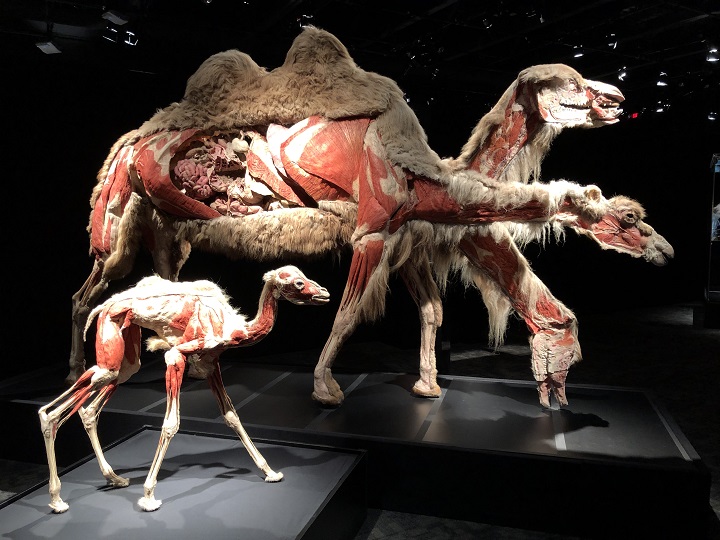Body Worlds ANIMAL Inside Out at the Telus World of Science is giving visitors a new appreciation of familiar sights.

The exhibit opened in November 2018, following the success of Body Worlds and is now in its final few weeks.
Science Director Jennifer Bawden said it’s a great opportunity for people to see animals in a way they’ve never experienced before.
“You see animals that swim, walk and fly. Animals that are familiar to you and ones that are more exotic,” Bawden said.
LISTEN BELOW: Alberta species highlighted in Edmonton Body Worlds exhibit
A few of the animals in the exhibit have an Alberta connection.

Get breaking National news
“There are some caribou in the exhibit, there’s a bull. There are also some domestic animals: goats, sheep and horses. Lots of animals that people will be familiar with.”
Bawden said the caribou are an extremely popular section of the exhibit.
“They are an animal that is important in Alberta. They are a species that is endangered and that people are trying to conserve.
“They are one that people hear about a lot. They bring that context with them,” Bawden said. “They are exciting to see. Caribou are shy. You don’t get to see them very often in the national parks.”
Bawden said if someone has personal experience with an animal, they connect with the exhibit in a different way.
“We had a dairy farmer in the exhibit. These were animals here that he had grown up around. His connection to the exhibit was very different from my experience growing up in an urban environment.”
Conservation is also a thread throughout the exhibit.
“The exhibit overall is hoping to give you a sense of appreciation of your place in the animal kingdom and how you are connected to all of these animals.
“If you can put that into a bigger context, you do start to think about how your actions and choices affect other animals besides humans.”
The process of plastination was invented by Dr. Gunther von Hagens more than 20 years ago.
“The first step is formaldehyde — that preserves the tissue,” Bawden said. “They do a silicone impregnation then an acetone bath. Then they do a vacuum process, pull all the acetone out and replace it with plastic.”
That allows them to pose and cure the specimen, so it can be displayed.
No animals were killed for the exhibition. The animals are all donated, coming from zoos and national parks all over the world.
“You’ve never seen animals in this way.
“Veterinarians and vet techs come through and even these professionals are amazed and awed. There is a lot that people can learn.”
Body Worlds ANIMAL Inside Out is at the Telus World of Science until March 31.








Comments